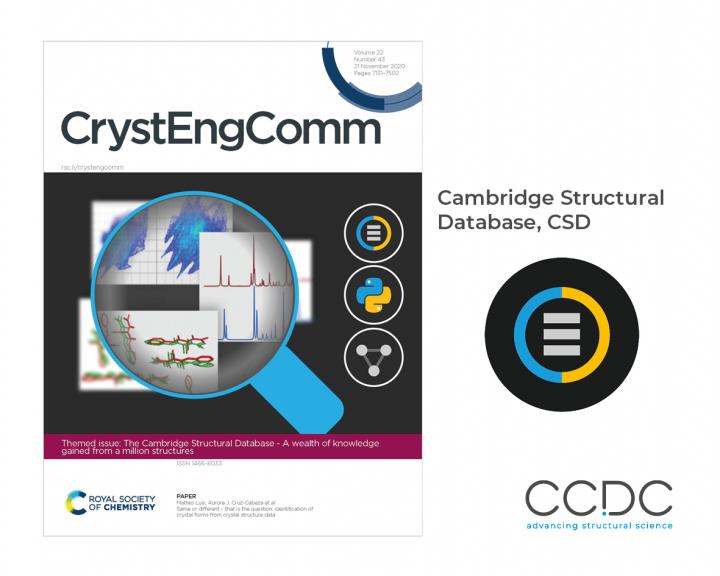The issue contains 33 papers highlighting the breadth of research made possible with this data

Credit: CCDC
The journal CrystEngComm has published a special issue to mark the Cambridge Structural Database (CSD) reaching 1 million structures, with 33 papers that highlight the breadth of applications made possible with this data.
CrystEngComm has published new research on all aspects in the design and understanding of solid-state and crystalline materials since 1999. They publish work covering a wide range of chemistries, but all involve the use of a design or optimisation strategy to develop a deeper understanding of the structures.
“The breadth of applications of the CSD is incredible, and this special issue of CrystEngComm really celebrates that.” says Suzanna Ward, Head of Database at the CCDC who curate the CSD. “We have groups investigating the nature of bonds, or ways to enhance the discovery of new MOFs, right through to optimizing the selection of co-formers for pharmaceuticals. What these papers have in common is the Cambridge Structural Database and it is wonderful to see how authors have gained new insights from the data we help the community to share.”
Since 1965 the CSD has been the world’s repository for small-molecule organic and metal-organic crystal structures. The data is derived from x-ray and neutron diffraction analyses, with each structure automatically checked and manually curated to enrich the entries with information such as chemical representations, physical properties, or key uses of the molecule. It is used by tens of thousands of scientists around the world to understand, discover, develop, and teach structural science.
To date, the CSD is comprised of 43% organic structures, including drugs, agrochemicals, pigments, explosives and protein ligands, and 57% metal organic structures, including MOFs, catalysts and porous frameworks for gas storage. It is used by top pharma companies, start-ups and academic institutions, and retains links to other key datasets including the PDB, Drugbank, PubChem and more. And the CSD continues to grow and evolve; it is expected to reach 1.1 million structures by the end of the year, and the CCDC are investing heavily in a database evolution project which will ensure the CSD is flexible and extensible to deal with the growing volume, types and uses of structural chemistry data.
“The CSD continues to be a key resource for solid-state scientists everywhere,” says Dr Andrew Shore, Executive Editor of CrystEngComm. “As the database reached 1 million structures we wanted to highlight the amazing variety of research that is possible with this resource. We look forward to seeing what new discoveries are made with the CSD next.”
Read the editorial for this special issue here: https:/
###
Media Contact
Sophie Bryant
[email protected]
Original Source
https:/
Related Journal Article
http://dx.




